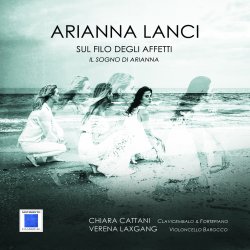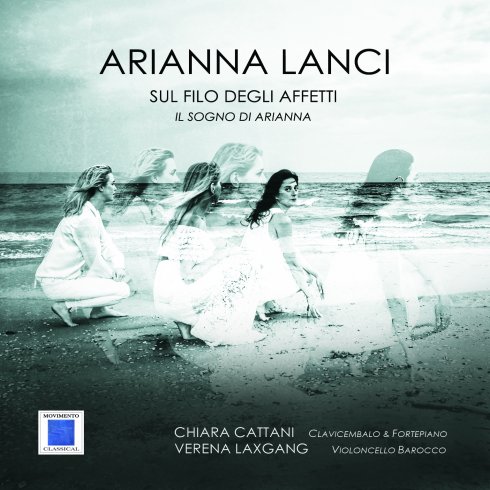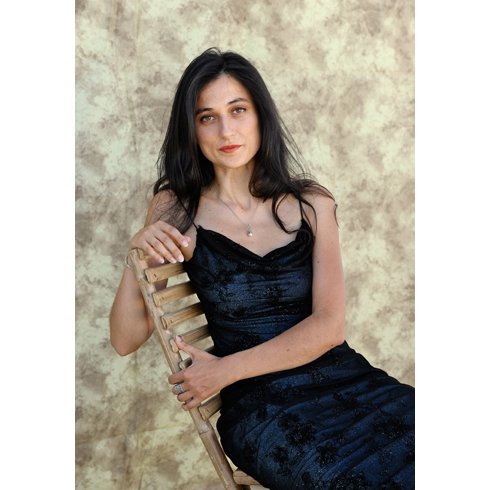

Sul filo degli affetti - Il sogno di Arianna
Touch extreme affection. Piace your self at the centre of an unavoidable existential reality: abandonment. Arianna, a mythological figure with blurred outlines, is open to a multiplicity of interpretations - poetic, musical and iconographic. lt is difficult, if not impossible, to reconstruct her story from their most ancient origins. Sufficient it to say that a Mycenaean tablet from Knossos, dated to around 1200 BC, contains not only the oldest example of the word Labyrinth, but also a charming reference to an unidentified Ladyof the Labyrinth. This seems to set us on the tra il of a proto-Arianna thought by many scholars to bave been a divinity originally and only later demoted to the rank of heroin. There is a fragility to Arianna as there is a power to her; there is no one single Arianna.
In Carme 64 by Catullus (87-52 BC) Arianna becomes the personification ofthe relicta (the abandoned woman) and the beach of Naxos s urpa sses the enigmatic scenario ofthe labyrinth, becoming the stage on which the emotiona l drama about the Cretan princess will be played out for centuries to come. Here we see a generos ity t hat borders on crime. For the love ofTheseus Arianna betrays her father by helping Theseus to kill her monstrous brother. Catullus bequeaths the theme of Arianna's lament to posterity. The seed he sowed would soon bear fruit in relation to other female mythological figures, primarily Dido an d Medea, but neither of these women is easily reduced to a feeling ofabandonment, they are forever "impure victims". Their suffering is stained by guilt, as if their originai transgression has made it impossible for them to win back their lost homeland. Catullus's Ariadne is the main point ofreference for Ovid (43 BC-18 AD), who with the X Erodiade (10th Heroides) takes the tone of Carme 64 to the extreme. This became the main source for representations ofthe Cretan princess in the Baroque era.
Abandoned while she is sleeping, on awakening. Arianna finds herself completely alone on the deserted island and, ina letter full of invocations, tears and recriminations, begs Theseus to come back, at least to collect her bones. Perhaps, therefore, it is no coincidence thatwe find her among the first heroines ofmelodrama. ln 1608the performance of L'Arianna by Claudio Monteverdi (1567-1643) at the Palazzo Ducale in Mantua, lays down the "Lamento" genre as one of the most beloved Topoi of musical theatre from the outset, leading the spectator to the centre ofthe newstyleof monodie singing , Recitar Cantando, that flourished in ltaly at the turn ofthe sixteenth and seventeenth centuries. The famous Lamento d'Arianna, the only surviving gem ofthe entire Opera, constitutes an autonomous and powerful theatrical scene, a summary of the expressive potential of the declamato arioso, which resulted from the happy union ofMonteverdi and Rinuccini, author of the libretto. Its tragic opening."Lasciatemi morire" (let me die or Jeave me to die), places the verb lasciare (to leave), which returns as a leitmotiv in various points of the monologue, firmly centre stage. In a soliloqu y to the audience, Arianna begs Theseus to Jet her die, but when she turns to himit seems she doesn't really want to die at ali.
nAh Theseus, ah my Theseus,
will you let me die,
crying in vain, crying out in vain, miserable Arianna
that trusted you,
and gaveyou glory and /ife?"
The melodie quotation of the lnltial chromatlsm ls stgnlflcant, corresponding to the words "leave me", in the expresslon "lnvan gri
dando aita" (crying out in vain) and in particular on the word "gridando" (to cry out) as ifto reiterate that ber cry for help wlll not


Born in Rimini, Arianna graduated with honours in philosophy at the University of Bologna, earning her degree in opera singing in 2008 at the Conservatorio G. Rossini in Pesaro, where she studied under Evghenia Dundekova. She went on to perfect her baroque vocal technique with Roberta Invernizzi. She attended master-classes with major international performers of ancient, renaissance and baroque repertoire including Gloria Banditelli, Jill Feldman, Monica Bacelli, Rinaldo Alessandrini, also perfecting her Bel Canto technique with Sherman Lowe and Fernando Cordeiro Opa.In February 2014 she obtained a Level II Diploma in Renaissance and Baroque singing with full marks and honors from the Conservatorio “A. Pedrollo” in Vicenza under the guidance of Patrizia Vaccari, winning the Award for the Best Student in the “Fatima III Prize” at the 6th Competition of Ancient Music. Selected as a finalist in many competitions including the “International Competition of Sacred Music” in Rome 2009, the “Francesco Provenzale Competition of Baroque Singing” 2009 and the “City of Bologna International Opera Singing Competition” 2011, she won first prize at the “1st International Competition of Baroque Singing La musica dei Papi” in Pienza in 2011. She has performed in prestigious theaters and concert halls, in Italian and international festivals (Teatro Rossini Pesaro, Teatro Comunale and Teatro Olimpico Vicenza, Teatro Accademico Castelfranco Veneto, Teatro della Fortuna Fano, Auditorium Pollini Padua, Auditorium San Fedele and Sala Verdi Milan, Palazzo Chigi Saracini Siena, Piazza Verdi Rai Radio 3, Roma Festival Barocco, Festival Oude Muziek Utrecht, Festival Antiqua Bolzano, Sagra Musicale Malatestiana Rimini, Festival di Musica Antica Magnano, Festival de Musique Baroque du Jura Arbois, Istituto Italiano di Cultura San Francisco) singing as a soloist and in vocal ensembles under the direction of numerous conductors, including Claudio Astronio, Alfredo Bernardini, Alberto Busettini, Paolo Faldi, Michele Gasbarro, Marco Mencoboni, Riccardo Muti and Christopher Stembridge. On stage she has starred in the roles of Proserpina and Speranza in Monteverdi’s “ Orfeo”, Dido in Purcell’s “Dido and Aeneas”, Phalti in Gazzaniga’s “Susanna”, Ino in Handel’s “Semele” and Nice in Vivaldi’s “Serenata a tre”. She collaborates with several vocal and instrumental groups specializing in both ancient and contemporary repertoire, among which Bologna Chamber Choir, the Melodi Cantores Ensemble, Vox Altera Ensemble, Cappella Artemisia, Festina Lente Ensemble, Cantar Lontano Ensemble and the Laus Concentus Ensemble. She has also dedicated herself to the music of oral tradition, focusing on Sephardic Jewish repertoire. In 2004 she founded the Ananke project, with which she took part in important musical events in Italy, Austria, France and Israel. She currently continues to devote herself to her Sephardic repertoire within the Aman Sepharad project, with which she frequently performs concerts in Europe and the United States.She collaborates with pianists Stefania Redaelli and Mario Totaro on contemporary chamber music programs: performing the Berio’s Folk Songs and Schoenberg’s Pierrot Lunaire and taking part in debut performances of contemporary vocal compositions. She recently extended her musical interest to the Middle Ages, not only in terms of vocality, but also by devoting herself to the study of ancient keyboards, in particular clavisimbalum, an instrument of which she has a philological copy created by Graziano Bandini, based on the Arnaut de Zwolle treatise of 1440. Active in education, she teaches a singing course at the Centro Studi Musica Antica in Gradara. She directs the Vocal Ensemble Canòpea, a choral group of twenty members with their permanent seat at Scolca Abbey in Rimini, dedicated to the recital of medieval and Renaissance music with incursions into contemporary repertoire. Since 2018 she has taught Renaissance and Baroque singing at a specialized summer course, “Corso Estivo di Perfezionamento Marco Allegri”, in Castrocaro Terme, in collaboration with harpsichordist Chiara Cattani.
